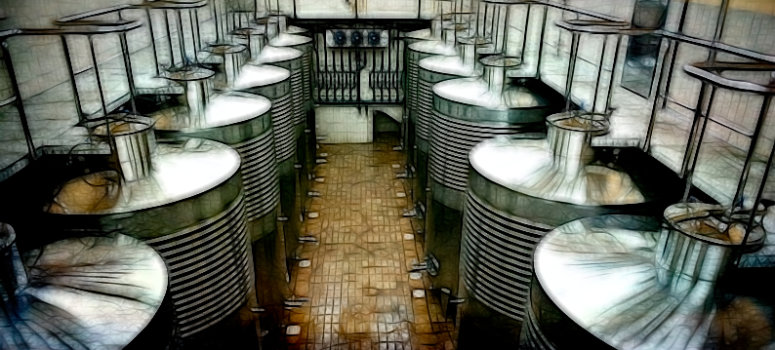Wine Making
OUR MISSION:
As sustainable wine producers, our aim is (and always has been), to make the most natural wine that our Atlantic climate and soils will allow. We use our best, hand-selected grapes, refined using only the most natural wine making procedures. Our cellar and vineyard techniques employ only the minimum intervention, allowing us to produce pure wines that are an authentic representation of our most unique and expressive albariño grape variety.
Grape Reception:
The delicate Albariño grape arrives in well-ventilated plastic boxes each weighing no more than 20 Kg. The boxes are weighed on electronic scales, checked carefully for their sanitary state, and then each individual load is analysed in our laboratory. Boxes are then carefully emptied into a hopper directly above our presses, meaning that no pumps or conveyors are required. The detail of each load is recorded on computer, enabling us to trace the progress of each delivery throughout the wine making process. (Please note that quality control is made during the picking process whereby any substandard fruit is simply left on the vine).
Pressing:
Arriving from the reception hall above, the whole bunches are pressed slowly and gently using two pneumatic presses. The grape juice is then immediately cooled using a heat exchanger located next to the presses. (After pressing the grape skins are emptied into a large container ready for dispatch to the distillery to be made into Aguardiente).
Settling:
The chilled juice descends, once again by gravity, into stainless steel tanks and is allowed to settle for 24 hours. During this time the temperature of each tank is strictly controlled to prevent the onset of alcoholic fermentation. Once all impurities have settled at the base of the tank, the cleaned must can then be racked off.
Fermentation:
Throughout fermentation temperature is constantly monitored and strictly controlled. At Castro Martin we prefer to use a long, cool, slow fermentation to produce a wine of greater depth and complexity. Depending upon the grape and juice analysis, perhaps when the natural acidity is a little elevated, we will allow a small percentage the wine to undergo malolactic fermentation.
Lees ageing:
Once the fermentation is complete the exhausted yeast cells settle at the bottom of the tanks – these are known as the ‘lees’. This natural deposit still contains many beneficial nutrients, and by storing our wine in tank for a prolonged period, it is allowed to ‘feed’ and gain additional character and complexity. This lees ageing technique is applied to every tank of wine in our cellar and extends for a period of approximately six to eight months.
Cold Stabilisation & Filtration:
Since 2018 our approach toward cold stabilisation and filtration has been under review. Every time a wine is moved or processed in any way, it can, effectively, lose a little of its character and/or freshness. Obviously, these fresh, zesty characteristics are the traits that we really want to retain, keeping our wines both as typical and natural as possible. However, the only slight downside of not applying cold-stabilisation to a wine is that it can, in certain circumstances, precipitate small tartrate crystals in the bottle (often when the bottle is refrigerated before serving). We should emphasise that, whilst appearing slightly unsightly, these tartrate crystals are actually both completely natural and totally harmless. For us this is obviously a judgement call – do we want to sacrifice flavour and character simply in the interest of aesthetics?
(Once the wine has been removed from its lees, it is ready for cold stabilization and filtration. Cold stabilization is carried out by rapidly chilling the wine to approximately -6°C during which time tartrate crystals are precipitated and fall to the bottom of the tanks. The final process is a very light filtration using fine earth, before returning to tank and storing under a blanket of Nitrogen prior to bottling).
Bottling:
The bottling line itself is sterilized using hot water, and consists of machinery for bottle rinsing, filling, adding corks, capsules and self-adhesive labels (including the special slip label of our Domination of Origin). Following this the bottled wine is allowed at least one month to recover before it is finally released for sale.


